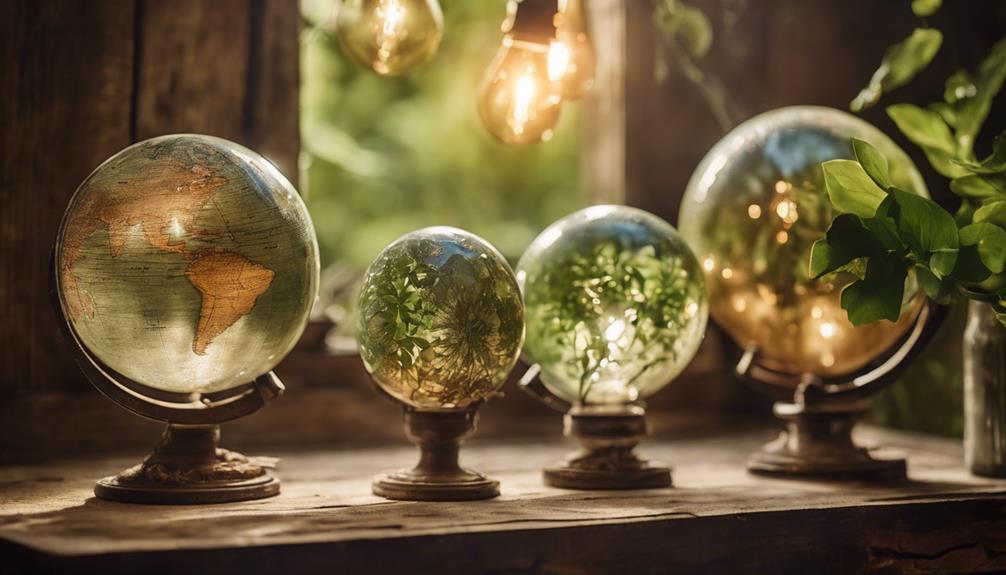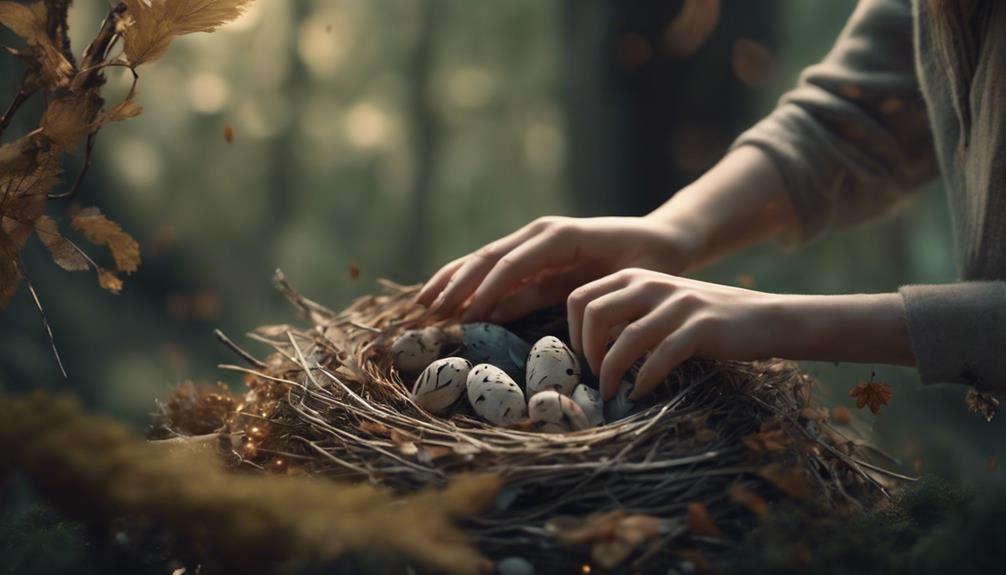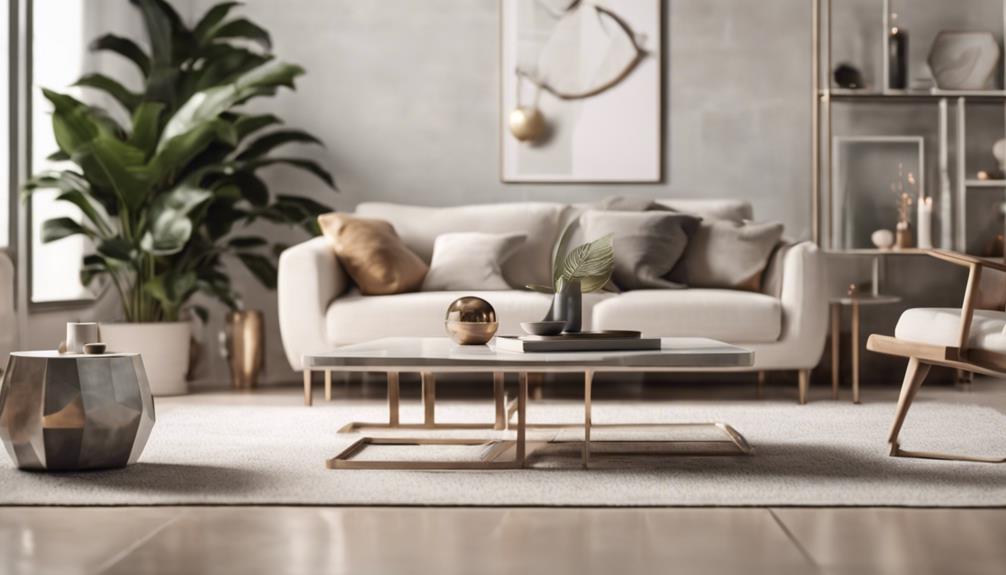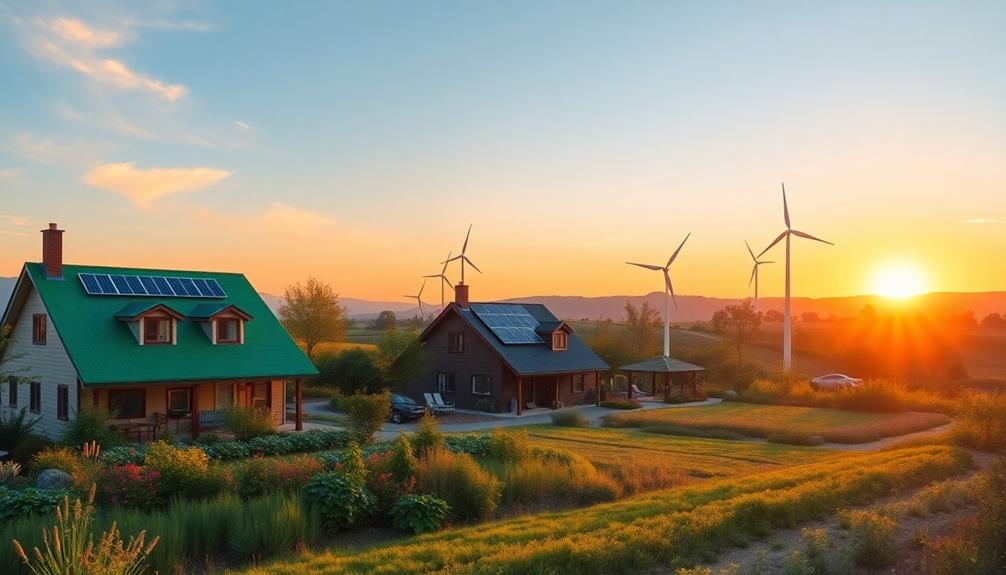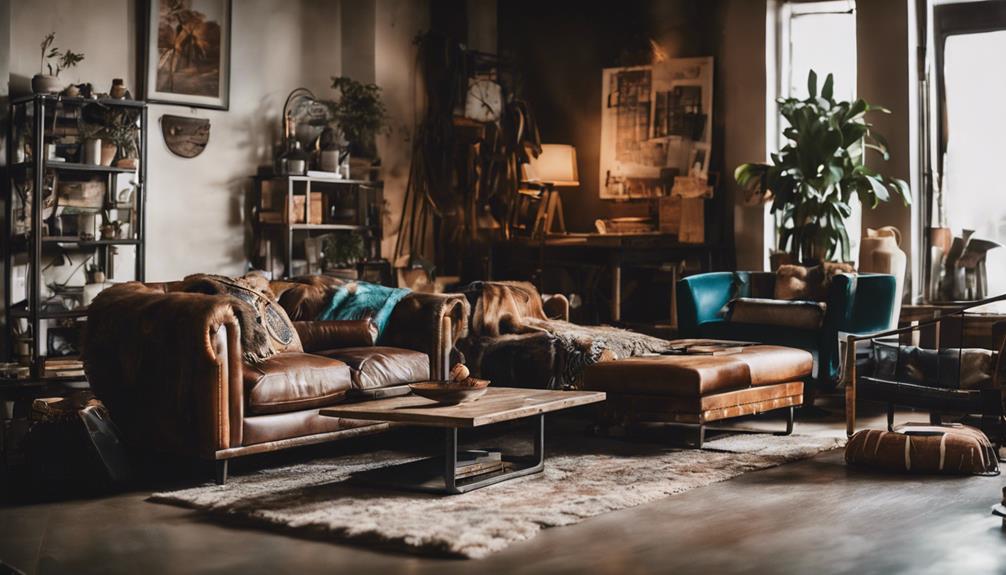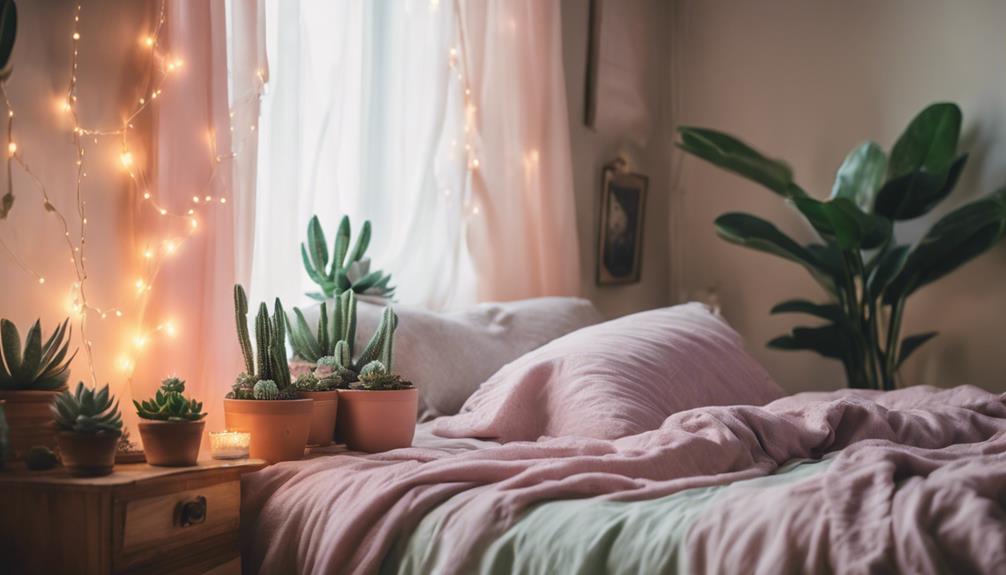As you hold a vintage glass globe, you're not just grasping a decorative ornament, but a tangible piece of history that distills the essence of a bygone era, its intricate craftsmanship, and cartographic precision evoking a deep sense of nostalgia and wonder. Vintage globes showcase meticulous craftsmanship, unique designs, and historical significance, making them timeless treasures. With their classic elegance, they blend seamlessly into modern spaces, illuminating the world's wonders and serving as educational tools. As you explore the world of vintage glass globes, you'll discover the artisanal craftsmanship, educational value, and nostalgic charm that make them truly timeless.
Key Takeaways
• Vintage glass globes evoke a sense of adventure and whimsy, transporting us to past eras with their timeless charm.
• Meticulous craftsmanship and unique designs make each vintage globe a one-of-a-kind masterpiece, exuding elegance and sophistication.
• As educational tools, vintage glass globes combine decorative and educational elements, illuminating geographical landscapes for students and scholars.
• Blending old and new, vintage glass globes add a touch of classic sophistication to modern spaces, creating a warm and inviting glow.
• As valuable resources, vintage glass globes confirm the art of antique cartography, holding a piece of history in your hands.
Capturing the Essence of the Past
As you gaze upon the intricate details of a vintage glass globe, you're instantly transported to an era that whispers tales of adventure, discovery, and exploration, capturing the essence of the past with remarkable precision.
The Replogle illuminated world globe, designed by Gustav Brueckmann in the late 1940s, is a prime example of this phenomenon. This 12-inch Library model, made in the USA, features identifying countries such as Germany, Korea, Israel, and French Indo China, showcasing a level of cartographical accuracy that was groundbreaking for its time.
The globe's glass shades, a hallmark of vintage lighting, add a touch of sophistication to any room. If you're looking for a similar piece, the Crams Imperial World Globe and the Replogle Stereo Relief Globe are also available, along with the Faries Bankers Lamp, which offers a unique blend of functionality and style.
Each of these vintage globe options offers a unique window into the past, allowing you to appreciate the artistry and craftsmanship of a bygone era.
Nostalgic Charm of Vintage Globes

As you explore the nostalgic charm of vintage globes, you'll discover a world of whimsy and adventure. From the beautifully illustrated maps of yesteryear to the forgotten era of exploration that inspired them, every aspect of these alluring orb-shaped treasures whispers stories of the past.
As you continue to uncover the allure of vintage glass globes, you'll find yourself enchanted by the intricate details and historical significance that make them truly special.
Whimsical Maps of Yesteryear
Stepping into a room adorned with a vintage glass globe is like taking a step back in time, as the whimsical maps of yesteryear transport you to an era of discovery and exploration. You can't help but marvel at the intricate details and historical cartography styles that showcase geographical representations from bygone eras.
These vintage globes evoke a sense of nostalgia, capturing the essence of exploration and discovery that defined the past. As you gaze upon the maps, you're reminded of the thrill of adventure and the uncharted territories that awaited brave explorers. The craftsmanship and unique features of these globes are a tribute to the skill of cartographers and artisans of the past.
Whether you're a collector, enthusiast, or simply someone who appreciates the beauty of history, vintage glass globes are a treasured find. They add a touch of character and history to any space, serving as a decorative piece that sparks conversation and inspires curiosity.
Forgotten Era of Exploration
You're instantly transported to a bygone era of exploration and discovery when surrounded by the nostalgic charm of vintage glass globes. These ornate decorations evoke a sense of adventure, taking you back to a time when cartographers meticulously mapped the world, and explorers bravely ventured into the unknown.
The intricate details and craftsmanship of these vintage globes reflect the artistry of cartographers from the past, showcasing historical cartography and design. As you gaze upon the aged patina and wear on these globes, you're reminded of their journey through time and history.
The nostalgic charm of vintage glass globes adds a touch of sophistication to any space, making them a prized collectible for enthusiasts. By displaying one of these treasures, you're not only showcasing a piece of history but also paying homage to the pioneers of exploration.
Whether you're a history buff, a collector, or simply someone who appreciates the beauty of the past, vintage glass globes are sure to captivate and inspire.
Captivating Orb-Shaped Treasures
With their enchanting orb-shaped design, vintage glass globes exude timeless charm, transporting you to an era of elegance and refinement. As you gaze at these captivating treasures, you can't help but feel a sense of nostalgia wash over you.
The intricate craftsmanship that went into creating these vintage glass globes is a tribute to the artisans of the past, who carefully blended artistry and functionality. Whether displayed in a home, office, or library, these globes add a touch of sophistication to any space.
The allure of vintage glass globes lies in their classic appeal and historical significance, making them a nostalgic treasure that transcends time. As you hold one of these vintage globes in your hands, you can almost imagine the explorers of yesteryear using similar instruments to navigate uncharted territories.
The timeless charm of vintage glass globes is undeniable, making them a treasured possession for anyone who appreciates the beauty of the past.
Artisanal Craftsmanship on Display
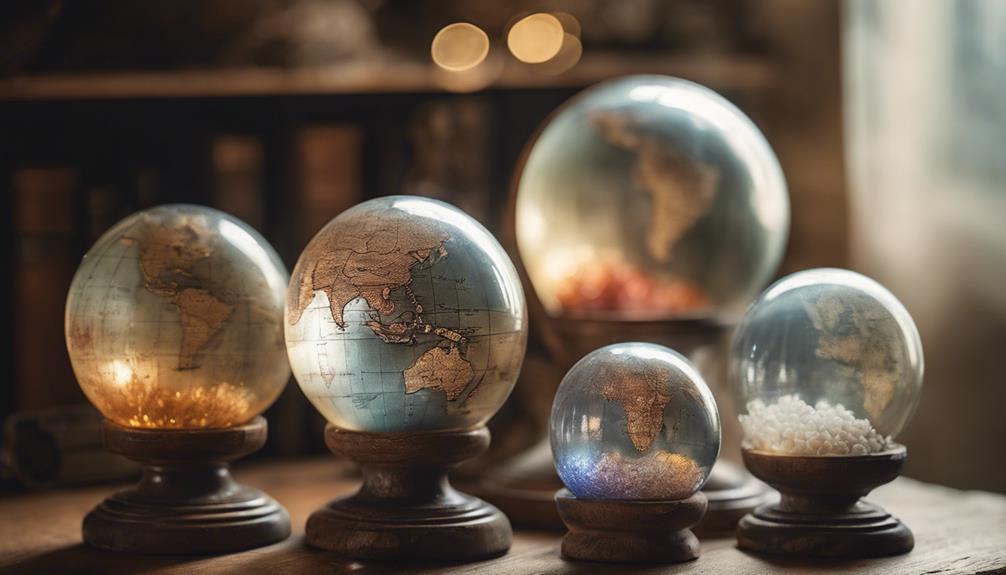
As you hold a vintage glass globe, you're struck by the precision and artistry that defines every delicate curve and intricate detail. It's a tribute to the skilled artisans who crafted these orbs, pouring their hearts and souls into every piece. Each globe is a unique work of art, a masterpiece that showcases the artisan's expertise.
| Craftsmanship | Materials | Characteristics |
|---|---|---|
| Hand-blown glass | High-quality glass | Delicate curves, intricate details |
| Meticulous attention to detail | Skilled artisans | Timeless elegance, charm |
| Precision engineering | Quality materials | Stunning decorative pieces |
| Unique, one-of-a-kind designs | Vintage charm | Collector's items |
| Skilled craftsmanship | Attention to detail | Sophisticated, elegant decor |
The level of craftsmanship within these globes is astounding, and it's no wonder they're highly sought after by collectors. When you purchase a vintage glass globe, you're not just buying a decorative piece – you're investing in a piece of history. And with a Money Back Guarantee, you can trust that you're getting a genuine, high-quality item that will open up a new world of wonder within your home.
Illuminating the World's Wonders
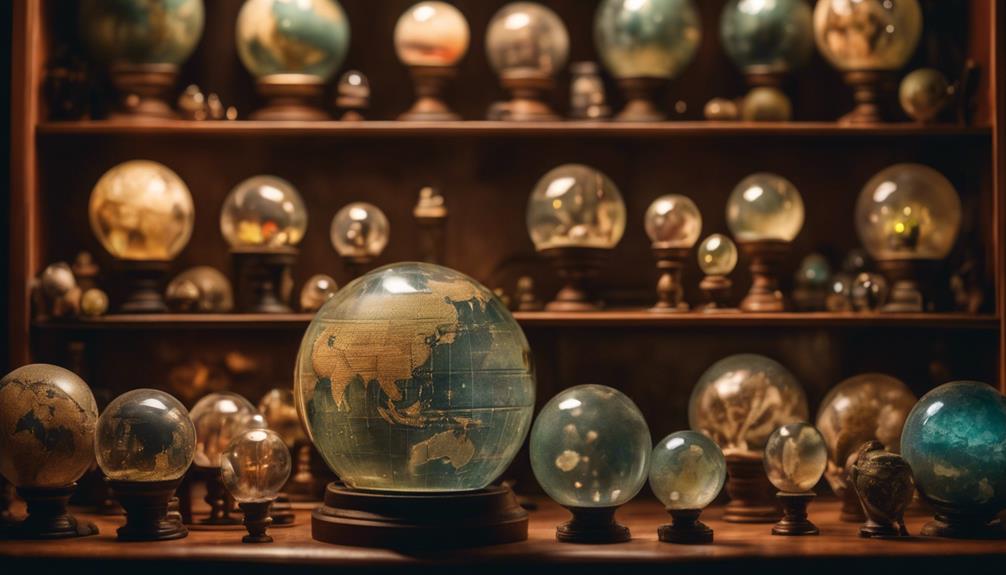
Vintage glass globes like the Replogle Illuminated Glass Globe, designed and edited by Gustav Brueckmann, offer a fascinating glimpse into the world's wonders, bringing international landmarks and geographical features to life with their soft, warm glow.
As you gaze at this 12-inch Library model globe, you'll discover identifying countries like Germany, Korea, Israel, and French Indo China, taking you on a journey across the world.
This stunning item, estimated to be from 1948-49, stands 15 3/4 inches tall with a base diameter of 8 5/8 inches, making it a statement piece in any room. With its working light and 6 2 cord, you can enjoy the warm ambiance it provides.
Plus, with free domestic shipping to the 48 contiguous states, you can get this vintage beauty delivered right to your doorstep. And, with a Money Back Guarantee, you can shop with confidence.
If you're looking to finance your purchase, consider using your PayPal Credit account, which opens new window of payment options.
Vintage Glass in Modern Spaces
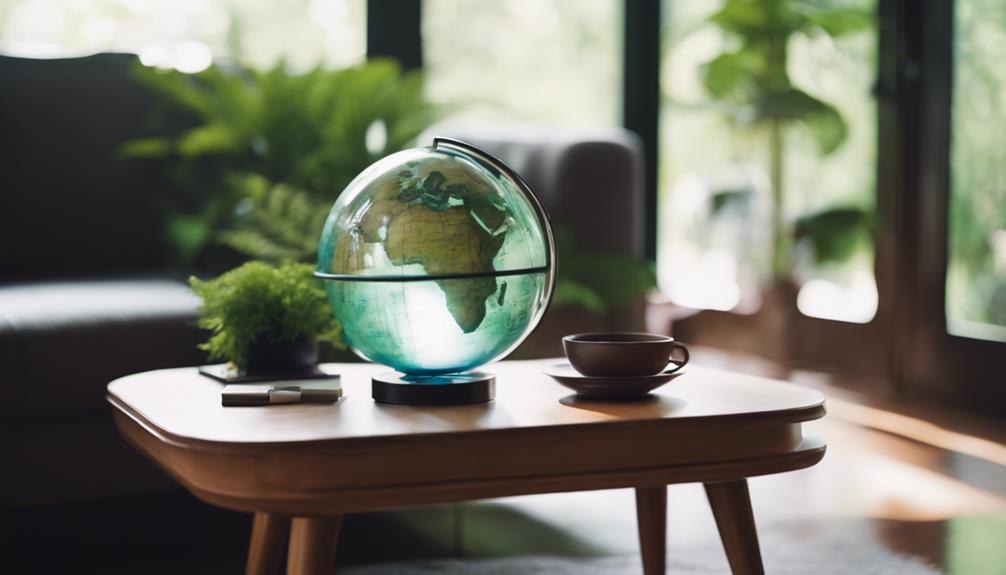
As you bring vintage glass globes into your modern space, you're about to discover the magic of blending old and new, creating a look that's both nostalgic and contemporary.
By incorporating these timeless treasures, you'll revive classic elegance and add a touch of sophistication to your interior design.
With their versatility and enduring appeal, vintage glass globes become essential decor elements that elevate your space and transcend fleeting trends.
Mixing Old and New
By incorporating vintage glass globes into your modern space, you'll create a mesmerizing blend of past and present that adds depth and visual interest to your interior design. This eclectic touch brings a unique sophistication to contemporary design, making your space stand out from the crowd.
Here are three ways to successfully mix old and new styles with vintage glass globes:
- Play with contrast: Combine vintage glass globes with modern, sleek furniture to create a visually striking juxtaposition.
- Add a pop of color: Use vintage glass globes in bold, bright colors to add a fun and playful touch to your modern space.
- Create a focal point: Group vintage glass globes together to create a stunning centerpiece that draws the eye and sparks conversation.
Reviving Classic Elegance
You can bring a sense of refinement to your modern space by incorporating vintage glass globes, which infuse the room with a classic elegance that's hard to replicate with modern decor alone. These globes offer a timeless appeal that complements a variety of interior design styles, from modern minimalist to traditional and eclectic. By incorporating vintage glass globes into your decor, you can create a nostalgic atmosphere that transports you to a bygone era.
| Benefits | Description |
|---|---|
| Timeless Appeal | Vintage glass globes add a touch of classic elegance to modern spaces |
| Versatility | They complement a variety of interior design styles |
| Nostalgic Atmosphere | They create a warm and inviting glow while showcasing intricate cartography |
| Historical Charm | They elevate the aesthetic of a room with their historical charm |
Timeless Decor Essentials
Your modern space can greatly benefit from the incorporation of vintage glass globes, which effortlessly merge nostalgic charm with sleek contemporary design. These decorative pieces add a touch of timeless elegance to any room, blending nostalgia with modernity.
Whether you're looking to create a cozy atmosphere in your living room or add a touch of sophistication to your home office, vintage glass globes are the perfect accent.
Here are just a few ways to incorporate vintage glass globes into your modern decor:
- Add a touch of whimsy: Hang a vintage glass globe from a pendant light or use it as a unique centerpiece for your dining table.
- Create a cozy reading nook: Place a vintage glass globe on a side table or bookshelf to add warmth and ambiance to your reading space.
- Elevate your home office: Use a vintage glass globe as a paperweight or desk decoration to add a touch of sophistication to your workspace.
When shopping for vintage glass globes, look for sellers that offer a Money Back Guarantee, such as eBay's Money Back Guarantee, to make a risk-free purchase. With their timeless charm and versatility, vintage glass globes are the perfect addition to any modern space.
Educational Tools of Yesteryear
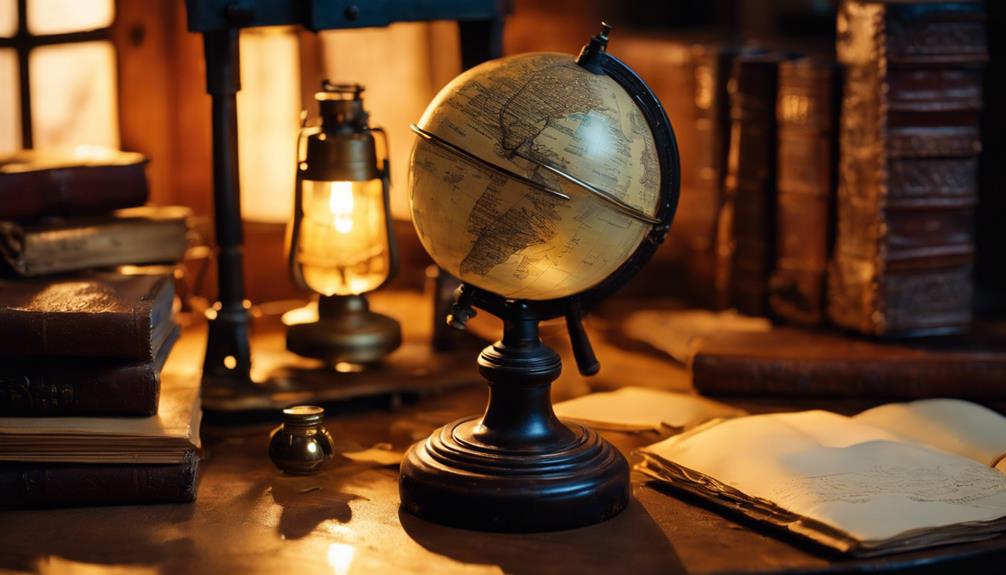
Discover the fascinating world of vintage glass globes, which played a significant role as educational tools of yesteryear, illuminating the geographical landscape for students and scholars alike.
As you explore the world of vintage globes, you'll realize that they were more than just decorative pieces – they were essential tools for learning.
Take, for instance, the Replogle 12 inch Library model, designed by Gustav Brueckmann in Chicago, Illinois. Made in the USA around 1948-49, this globe features a 6'2' cord and displays countries like Germany, Korea, Israel, and French Indo China. With its 15 3/4' height and 8 5/8' base diameter, this illuminated glass globe is both a decorative and educational masterpiece.
When purchasing vintage globes, you can rest assured with eBay's Money Back Guarantee, ensuring your purchase is protected. With free shipping within the 48 contiguous states, you can start exploring the world of vintage glass globes today!
The Allure of Antique Cartography
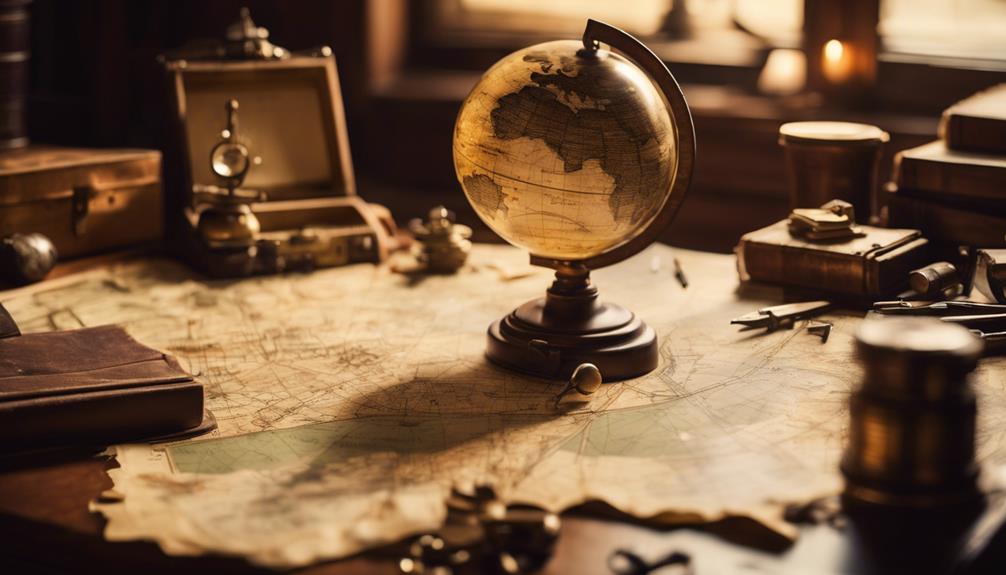
As cartographers like Gustav Brueckmann poured over ancient maps and manuscripts, they crafted intricate, historically accurate representations of the world, which are now showcased in vintage glass globes. These globes are a confirmation to the art of antique cartography, where every detail, from country borders to geographic features, was meticulously researched and rendered. The allure of these vintage globes lies in their ability to transport you to a bygone era, where exploration and discovery were still unfolding.
Here are a few fascinating aspects of antique cartography in vintage glass globes:
- Historical accuracy: Cartographers like Brueckmann confirmed that their maps reflected the most up-to-date knowledge of the time, making these globes valuable resources for historians and researchers.
- Intricate details: From the subtle shading of mountains to the delicate rendering of coastlines, every aspect of these globes was carefully crafted to create an immersive experience.
- Timeless appeal: Despite being created decades ago, vintage glass globes like the Replogle Globes' 12-inch Library globe model continue to captivate audiences with their beauty and historical significance.
As you gaze upon these vintage globes, you're not just looking at a decorative piece – you're holding a piece of history in your hands.
Sophisticated Decor for Any Room
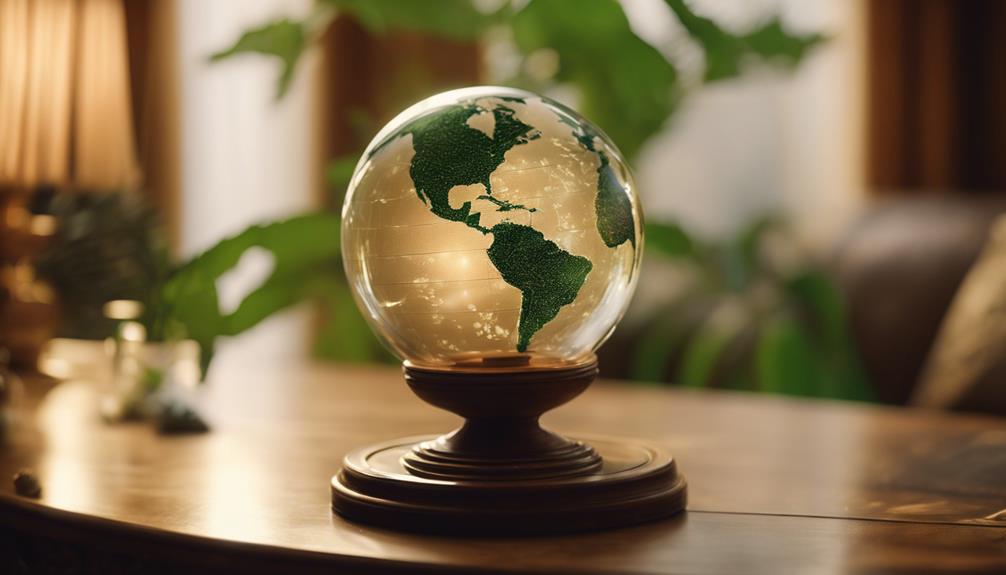
With their classic elegance and timeless appeal, vintage glass globes effortlessly elevate the ambiance of any room, adding a sophisticated touch to your interior design.
You can create a unique and elegant atmosphere in your space by incorporating these beautiful decorative pieces into your decor.
Whether you're looking to add a touch of nostalgia or a dash of sophistication, vintage glass globes are the perfect addition to any room.
They come in various sizes and styles, making it easy to find the perfect fit for your aesthetic preferences.
Use them as standalone decor pieces or as functional lighting fixtures – the possibilities are endless.
By incorporating vintage glass globes into your interior design, you'll be adding a timeless touch that exudes elegance and refinement.
They're a popular choice for those seeking a blend of nostalgia and style, and with their versatility and classic appeal, it's easy to see why.
Preserving History in Glass
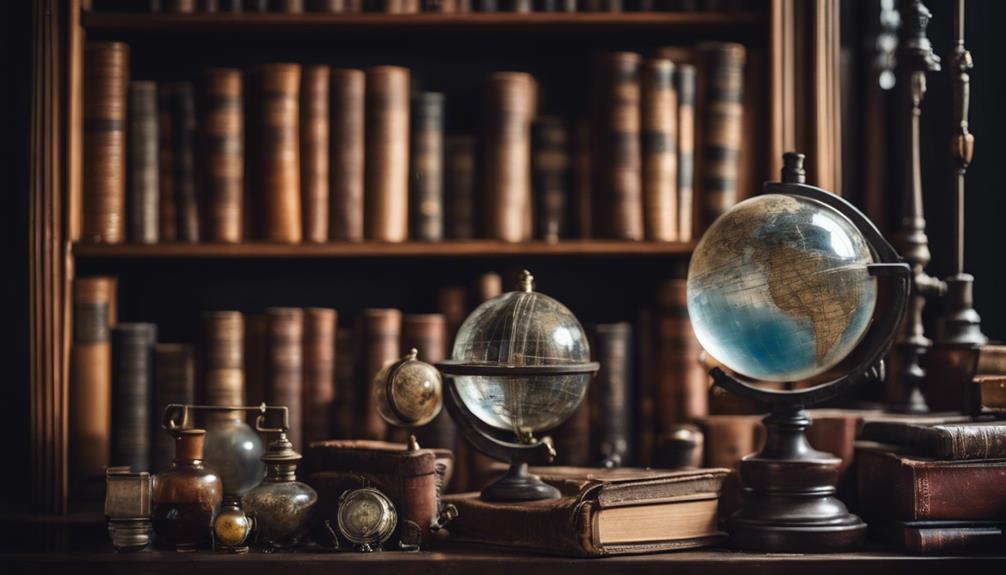
You can own a piece of history with vintage glass globes like the Replogle Library Globe, which was meticulously designed by Gustav Brueckmann in the late 1940s. These unique pieces not only add a touch of sophistication to any room but also serve as a window to the past.
When preserving history in glass, it's crucial to take into account the following factors:
- Authenticity: Verify the globe is genuine and not a reproduction. Look for signs of aging, and confirm the manufacturer's marks.
- Condition: Inspect the globe's working condition, including any illumination features. A functioning globe can greatly enhance its value.
- Provenance: Investigate the globe's history, including its origins and previous owners. This can significantly impact its value and authenticity.
When purchasing a vintage glass globe, consider buying from reputable sellers who offer an eBay Money Back Guarantee. This ensures you're protected in case the globe doesn't match the description.
With the right precautions, you can own a stunning piece of history that will illuminate your space and spark conversations.
Frequently Asked Questions
Are Vintage Glass Globes More Valuable if Signed by the Artist?
When you're considering the value of vintage glass globes, one important factor is the signature of the artist. You'll often find that signed globes are more valuable due to their rarity and authenticity.
Typically, a signature from a renowned artist can increase the globe's worth by 20-50%. However, it's vital to verify the signature's authenticity through documentation or expert appraisal to make sure you're not buying a reproduction.
Can I Use Vintage Globes as Functional Decorations in My Office?
You're contemplating repurposing vintage globes as functional decorations in your office, but you might be wondering if they're more than just a quirky conversation starter.
Surprisingly, these ornate globes can add a touch of sophistication to your workspace. With a little creativity, you can transform them into unique pen holders, paperweights, or even mini planters.
Just make sure you clean and dust them regularly to maintain their elegance.
How Do I Properly Clean and Maintain My Vintage Glass Globe?
When it comes to cleaning and maintaining your vintage glass globe, you'll want to handle it with care. Gently dust the globe with a soft, dry cloth to remove any loose particles.
For more thorough cleaning, mix a solution of mild soap and distilled water, and gently wipe the globe with a soft-bristled brush or a lint-free cloth.
Avoid using harsh chemicals, abrasive materials, or excessive water, which can damage the globe's surface or cause it to deteriorate over time.
Can I Find Vintage Globes With Specific Geographical Features or Themes?
You're on the hunt for vintage globes with specific geographical features or themes – and you're not alone! Many collectors seek out globes showcasing particular regions, like antique maps of Europe or Asia, or globes highlighting historical events, such as the Age of Exploration.
You can find these unique globes at antique shops, estate sales, or online marketplaces like eBay or Etsy, where sellers often highlight the globe's distinct features in their descriptions.
Are Vintage Glass Globes Considered a Good Investment Opportunity?
As you consider investing in vintage glass globes, you're probably wondering if they're a good investment opportunity.
While some rare and limited-edition globes can appreciate in value over time, most vintage globes are more of a collectible hobby than a lucrative investment.
You'll need to research and find rare, high-demand globes in excellent condition to potentially see a return on your investment.
Conclusion
As you gaze upon the vintage glass globe, its intricate details and faded hues transport you to an era of discovery and exploration.
Like a time capsule, it holds secrets of the past, whispers of ancient cartographers, and the echoes of forgotten civilizations.
Will you be the keeper of its stories, the guardian of its timeless beauty?
